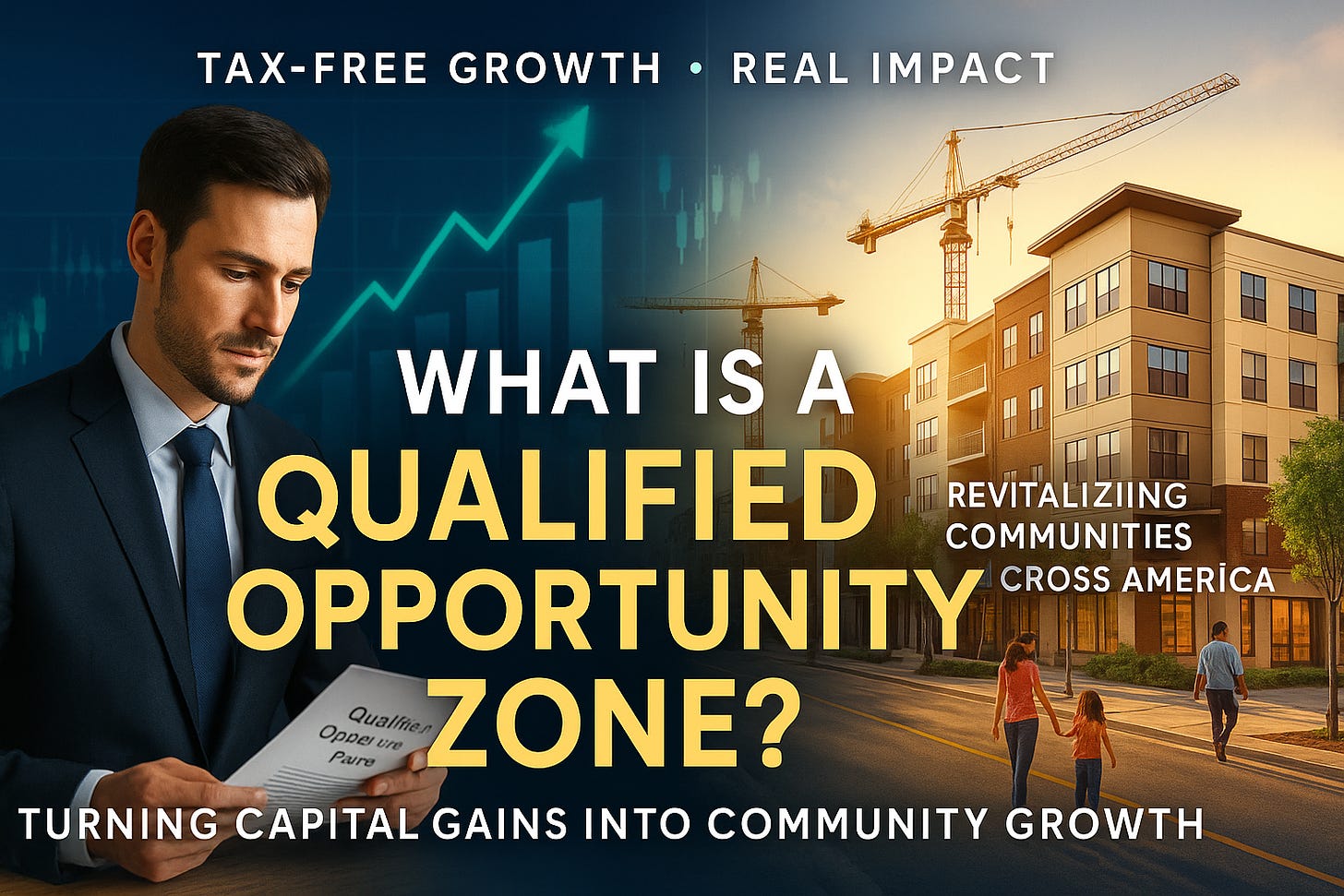What is a Qualified Opportunity Zone?
A Qualified Opportunity Zones (QOZ) is a unique part of U.S. tax policy designed to drive private investment into distressed communities while giving investors substantial tax incentives. Established under the Tax Cuts and Jobs Act of 2017, QOZs seek to spark economic development, create jobs, and improve infrastructure in low-income areas that historically struggle to attract capital.
How Qualified Opportunity Zones Are Selected
QOZs are designated census tracts identified as low-income or economically underserved. Governors of each state nominated potential tracts, and the U.S. Treasury approved the final designations.
Designed to unlock idle capital and drive economic revitalization, over 8,700 zones were designated across all 50 states, the District of Columbia, and U.S. territories. Together, they represent one of the largest place-based investment initiatives in U.S. history—covering roughly 12% of all census tracts nationwide.
These zones encompass both urban neighborhoods and rural communities, creating a broad landscape of opportunities—from redeveloping former industrial corridors and workforce housing to revitalizing small-town main streets and agricultural hubs. The intent is to push capital into areas where it can do the most good, stimulating long-term economic resilience rather than short-term speculation.
The Investor’s Role: Qualified Opportunity Funds
Investors cannot invest directly in a QOZ. Instead, they deploy capital through a Qualified Opportunity Fund (QOF)—a partnership or corporation specifically structured to channel investments into businesses or property located within Opportunity Zones.
Investors who roll eligible capital gains into a QOF within 180 days can access three powerful tax benefits:
Tax Deferral – Taxes on the original gain are deferred until December 31, 2026 (or when the QOF investment is sold, if earlier).
Basis Step-Up – For investments held at least 5 years (under the original rules), the investor could reduce taxable gains by 10%.
Exclusion of New Gains – If the QOF investment is held for 10+ years, all appreciation earned inside the fund can be excluded from capital gains tax.
As Robert Mowry notes:
“Opportunity Zones work best when investors look beyond the tax deferral and focus on long-term value creation. The incentive is powerful, but the real payoff comes when projects thrive for decades.”
Benefits for Communities
Beyond tax benefits, QOZs are intended to deliver long-term community impact. Funds can be used to:
Build or renovate housing to increase affordability.
Create commercial properties that bring jobs and services.
Support local businesses and startups by providing equity capital.
Improve infrastructure such as broadband, clean energy, or transportation.
Recent Policy Updates
In 2025, under the One Big Beautiful Bill Act (OBBBA) signed by President Trump, QOZs were made permanent, with several adjustments:
A new category of Qualified Rural Opportunity Funds (QROFs) with stronger incentives for rural projects.
Rolling 5-year tax deferral periods for new investments after 2027.
Stricter rules on which tracts can qualify to ensure capital goes to the communities that need it most.
Regular redesignations every 10 years, keeping the program dynamic and responsive.
Should You Consider Investing?
Qualified Opportunity Zones offer a rare chance to combine tax efficiency with social impact. They may be especially attractive for investors with large capital gains who can commit to a long-term horizon.
That said, QOZ investments carry risks—returns depend on the performance of the projects themselves, and compliance rules are strict. It’s essential to work with experienced legal, financial, and accounting advisors before investing.
As Robert Mowry emphasizes:
“The real beauty of QOZs is alignment. Investors can compound wealth tax-efficiently, while communities receive the capital they’ve been missing. When both sides win, the policy works exactly as intended.”
Qualified Opportunity Zones represent a powerful bridge between private capital and public need. For investors, they are a chance to defer taxes and grow wealth tax-efficiently. For communities, they are a chance to welcome investment, jobs, and renewal. Together, QOZs demonstrate how tax policy can be harnessed to create both profit and purpose.


